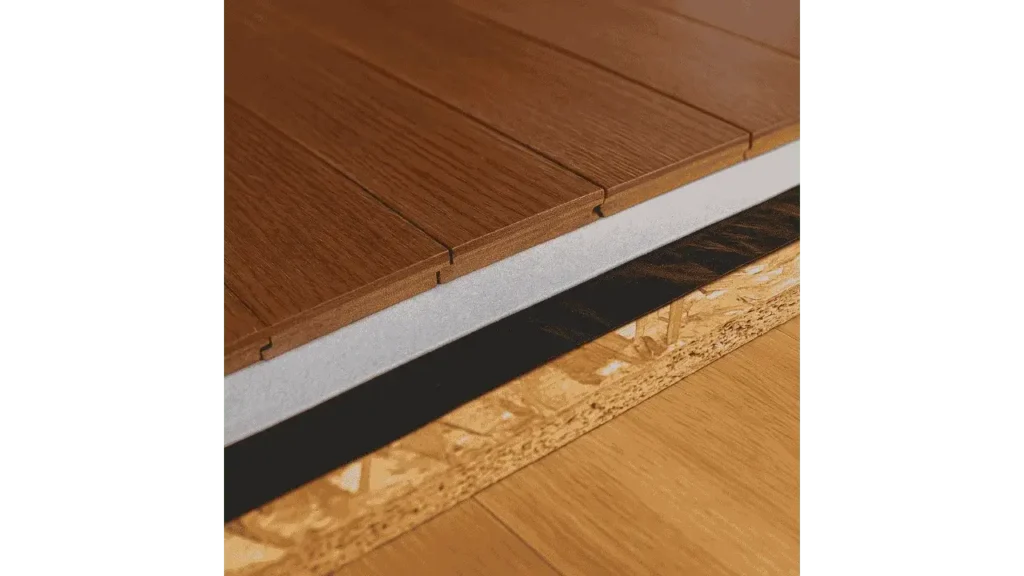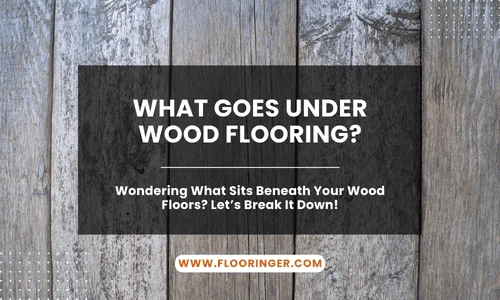When installing wood flooring, what lies beneath is just as important as the flooring itself. The right underlayment ensures stability, comfort, and longevity for your wood floors. Understanding the types of materials used under wood flooring helps you make informed decisions that improve performance and protect your investment. This guide explains the different types of underlayment and how to choose the best option for your wood flooring.

Why Is Underlayment Important?
Underlayment serves as a protective layer between the subfloor and the wood flooring. It provides cushioning, reduces noise, adds insulation, and protects against moisture. Choosing the correct underlayment can enhance the comfort and durability of your wood floors while preventing common issues like warping and squeaking.
Types of Underlayment for Wood Floors:
1. Foam Underlayment
Foam underlayment is lightweight and cost-effective. It offers basic cushioning and sound absorption, making it suitable for floating wood floors. Some foam underlayments come with a built-in moisture barrier for added protection.
Read More: How Long Does it Take to Install Hardwood Floors
2. Cork Underlayment
Cork is a natural material that provides excellent sound insulation and is resistant to mold and mildew. It’s ideal for rooms where noise reduction is important, such as bedrooms and living rooms.
3. Rubber Underlayment
Rubber underlayment is durable and provides superior soundproofing and moisture resistance. It works well in high-traffic areas and multi-story homes where noise control is essential.
4. Felt Underlayment
Felt is thicker than foam and offers better sound insulation and cushioning. It’s often used under solid hardwood and engineered wood floors for added comfort and stability.
5. Vapor Barrier Underlayment
In moisture-prone areas, such as basements or kitchens, a vapor barrier underlayment prevents water from seeping into the wood flooring. This type is commonly paired with foam or cork for combined protection.
6. Plywood or OSB (Oriented Strand Board)
For nail-down or staple-down wood flooring, a solid plywood or OSB subfloor provides a stable base. This layer ensures proper adhesion and structural support for the flooring above.
Read More: What Type of Plywood for Shed Floor?
Factors to Consider When Choosing Underlayment:
Subfloor Type
Concrete and wood subfloors require different underlayment materials. Moisture-resistant underlayment is critical for concrete subfloors, while wood subfloors need cushioning and soundproofing layers.
Flooring Type
Solid hardwood, engineered wood, and laminate floors have specific underlayment requirements. Floating floors need cushioning, while nailed or glued floors need firm support.
Moisture Levels
If the installation area has high moisture levels, such as basements or bathrooms, a vapor barrier is essential to protect wood floors from warping and mold growth.
Soundproofing Needs
In multi-level homes or apartments, underlayment with soundproofing properties can reduce noise transfer between floors, providing a quieter living environment.
Conclusion:
Choosing the right underlayment for your wood flooring is essential for performance, comfort, and durability. From foam and cork to rubber and vapor barriers, each underlayment type serves a specific purpose based on your flooring type, subfloor, and environmental conditions. Taking the time to select the best underlayment ensures your wood floors remain beautiful, stable, and long-lasting for many more years.
